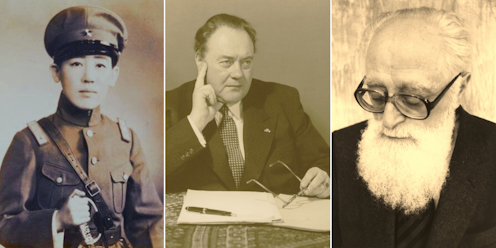What leads people to collaborate with the enemy? Ian Buruma's latest history considers three troubling examples
- Written by Jan Lanicek, Associate Professor in Modern European History and Jewish History, UNSW Sydney

Who is a collaborator? What leads people to collaborate with the enemy in times of war? How do they justify their actions? These questions are at the core of an insightful comparative biography by the prolific, award-winning Dutch writer Ian Buruma.
Buruma has published numerous popular works of modern history, bridging the geographic divide between Asia and Europe. Such accounts have the potential to offer nuanced insights into global developments.
In his new book, The Collaborators: Three Stories of Deception and Survival in World War II[1], Buruma combines his interest in Asian history and culture with his Dutch background and upbringing, which was influenced by mythical stories about the heroic anti-German resistance during World War II.
The circumstances under occupation were, however, much more complex. Buruma asks his readers to focus on the unheroic opposite side, presenting the stories of three people accused of collaborating with the enemy. Instead of selecting clear-cut characters, he navigates the mysteries surrounding individuals whose lives are hard to interpret.
“Very few people, collaborators or resisters, can be reduced to single types,” Buruma observes. “Human beings, even malicious or craven ones, are too complicated for that.”
Review: The Collaborators: Three Stories of Deception and Survival in World War II – Ian Buruma (Atlantic)














